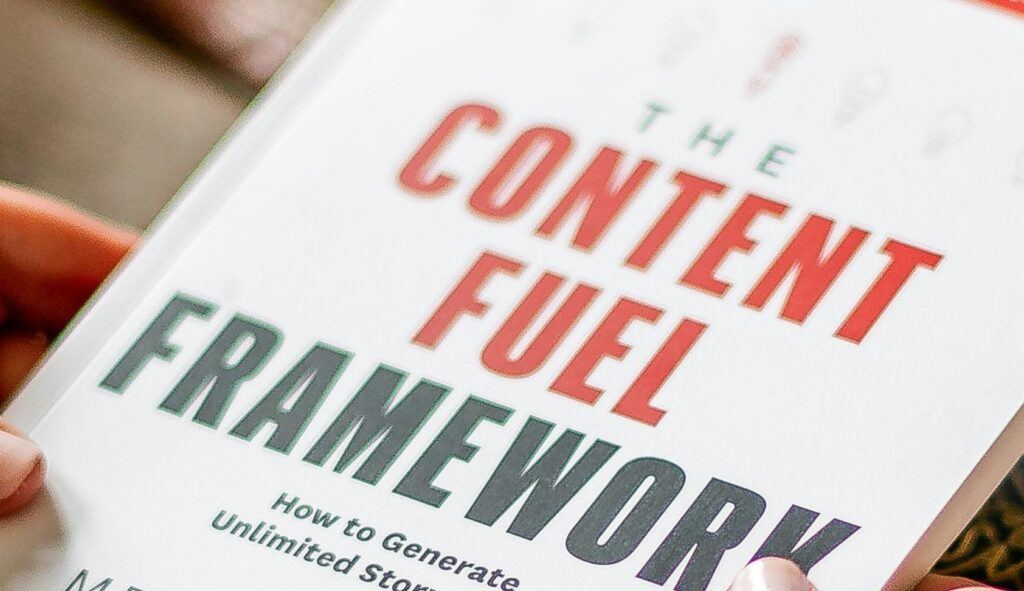Content marketing and affiliate marketing work best together if your goal is to build trust and attract steady sales. When you focus on real value, your audience is more likely to click your links and make a purchase.
After years of testing what works (and what flops), I’m here to walk you through the main strategies to get real results in affiliate marketing.

Why Content Marketing Matters for Affiliate Success
Content marketing is a practical way to attract, interest, and convert the right crowd. It goes beyond just promoting products. It’s about sharing ideas that keep people coming back when they’re ready to make a purchase. The best strategies blend transparency, credibility, and absolute value with plenty of help and teaching, rather than just pushing products.
Affiliate marketing has become increasingly competitive over the years. Many people have seen all the old-school tricks, so trust and education are what win now.
Whether you’re running a niche website, YouTube channel, or growing a social media following, helpful and honest content makes a huge difference.
A 2023 HubSpot report revealed that companies that blog regularly attract around 55% more website visitors, providing a significant advantage for driving organic traffic as an affiliate. (source)
7 Steps to Build an All-in-one Content Marketing Strategy for Affiliate Success
1. Identify Your Target Audience
Getting clear about who you’re talking to is the basis of every solid content strategy. When you understand their needs, pain points, and interests, recommending the right products becomes much easier. Start with:
- Interests and Problems: What are they looking for? What roadblocks frustrate them most?
- Demographics: How old are they? Where do they live? What kind of jobs or family situations do they have?
- Online Behavior: Do they prefer YouTube, blog posts, Instagram, or podcasts?
You can use tools such as Google Analytics or Facebook Audience Insights, as well as simple email surveys. When you fully get the problems your audience faces, your recommendations come across as genuine and valuable.
2. Pick the Right Content Platforms
You can go where your audience is already hanging out. Some readers love scrolling through Instagram. Others like long articles or watching in-depth videos. Think about these choices:
- Blogs: Great for detailed articles, guides, reviews, and SEO traffic. Ideal for individuals who want to research before making a purchase.
- YouTube: Awesome for demos, step-by-step tutorials, and hands-on reviews. Video also shows off your personality and style.
- Social Platforms: Instagram, Pinterest, Twitter, and Facebook all work for quick updates and teasers connecting back to longer content.
You can start with one or two platforms you can handle consistently. If you’re new, picking one can help you avoid feeling overwhelmed and make faster progress.
3. Develop a Content Plan and Schedule
Showing up regularly builds trust. That’s why a content calendar is your friend. Plan to spot emerging trends and prepare for peak seasons or major sales events.
- Topic Mix: Blend evergreen guides (that stay relevant year-round) with timely news, seasonal offers, or trending products.
- Posting Frequency: Decide on a routine—weekly, every other week, or monthly—and stick to it. Quality always beats quantity.
- Content Types: Lay out a mix of reviews, tutorials, comparison posts, personal stories, and curated roundups.
Use simple tools like Google Sheets, Notion, or Trello to track ideas, publish dates, and keyword focus. This keeps you organized and helps projects move forward smoothly.
4. Make Value-Driven, Authentic Content
No one enjoys a pushy sales pitch. The best affiliate content actually solves problems and is packed with personality. My favorites include:
- Step-by-Step Guides: Walk readers through real solutions using the products you’re promoting.
- Honest Product Reviews: Share both positives and drawbacks—being upfront builds trust fast.
- Comparison Posts: Line up similar products and explain who should get what and why.
- Personal Stories: Share your experience using a product. Readers love honest takes and practical results.
Trust is everything in affiliate marketing. Always disclose your affiliate relationships to readers. The FTC requires it, and it significantly enhances your reputation.
5. Boost Content for SEO
Getting seen on search engines is a straightforward way to attract a steady stream of new readers (and future buyers). Here’s my step-by-step game plan for making content search-friendly:
- Keyword Research: Find out what people actually search for. Free tools like Ubersuggest and Google Keyword Planner are great starters.
- On-Page Optimization: Use keywords naturally in your titles, headings, and paragraphs. Don’t force it—realness matters more than stuffing keywords everywhere.
- Title & Meta Description: Write catchy, transparent, and honest snippets to get more clicks from search results.
- Internal & External Links: Point to your own best posts and to solid sources outside your site.
- Images: Add relevant visuals with descriptive alt text—not just for SEO, but also for accessibility and interest.
SEO typically takes some time to take effect, but it’s worth the patience. Once the search traffic starts flowing, it really builds up your affiliate business.
6. Promote Your Content the Smart Way
If no one sees your hard work, it can’t pay off. These are some innovative ways to get your content in front of more eyes:
- Social Media: Share content in multiple formats: quote images, polls, video teasers, or short tips.
- Email Newsletters: Keep in touch with your subscribers by sharing each new post or review. Even a small list sends reliable, targeted traffic.
- Online Groups: Hop into Facebook groups, Reddit threads, and niche forums—if you add real value, you’ll pick up traffic and fans.
- Repurpose Content: Turn a blog article into a video, an infographic, or a series of social media posts to reach new audiences.
If something really resonates, could you double down on sharing and promotion there? You don’t have to do it all, but you can show up regularly wherever your crowd is most active.
7. Track, Analyze, and Adjust
You don’t need fancy tools to spot what’s working. I use a mix of Google Analytics, affiliate program reports, and a simple spreadsheet to see:
- Click-Through Rate (CTR): Are people clicking on your affiliate links?
- Conversion Rate: How many clicks turn into buyers?
- Engagement: Are readers commenting, sharing, or liking your content?
- Traffic Sources: Is a spike in sales tied to a specific platform or post?
Take time every month to check your data. See what kinds of posts, titles, or platforms send the most clicks and sales. Then put more energy into what works—or switch up what doesn’t connect.
Common Challenges in Affiliate Content Marketing (And How to Tackle Them)
No matter how strong your plan, obstacles will pop up. Here are the ones I see most, with easy fixes:
- Building Trust: Too much hype will turn your readers away. Be honest, balance recommendations with problem-solving, and always tell your audience about affiliate links.
- Content Burnout: Trying to do everything causes stress. Batch similar tasks together and stick to a simple schedule to ease pressure.
- Program Restrictions: Some affiliate programs (like Amazon’s) have specific link rules. Always check their terms before publishing.
- SEO Updates: Google’s changes can shake up rankings. If you only rely on search, you could suddenly lose traffic. Mix in email and social platforms to protect your efforts.
If you anticipate these hurdles ahead of time, you’ll handle them more effectively and can continue building without losing momentum.
Advanced Tips for Taking Up Your Affiliate Content a Notch
Once you’ve covered the basics, it’s time to step up your approach and outdo the crowd. Here are some tricks that have helped my content stand out:
Refresh Old Posts: Go back and update top-performing articles with new keywords, fresher screenshots, or better examples. This keeps your traffic steady, especially for evergreen topics.
Add Video and Visuals: Original review clips, how-to videos, or easy-to-read graphics make your content jump out from boring competitors. People remember images much more than pure text.
Super Detailed Content: Don’t be afraid to make in-depth guides. Both Google and readers appreciate well-explained, detailed information, especially on confusing or new topics. Long content tends to rank higher and attract more shares.
User Stories: If your audience sends in success stories, testimonials, or product reviews, ask to feature them. It’s a great way to add credibility and show that real people really benefit from your advice.
What Content Types Bring in Results for Affiliate Marketing?
Some formats get more action than others. Here’s what I see working again and again:
- Top 10 Lists and Product Roundups: Titles like “Top 7 Smart Home Devices” or “Best Budget Laptops of 2024” always pull in clicks.
- Comparison Content: People love side-by-side breakdowns of similar items, especially if they’re close to making a decision.
- How-To Tutorials: Posts or videos showing exactly how to solve a problem with the product you’re promoting.
- Personal Results and Real-Life Reviews: Readers want to know what happened when you used the product. Did it actually deliver?
Your unique perspective matters. Pre-state what others have said. Add small stories, lessons learned, or a favorite feature to make your reviews more personal and valuable.
Frequently Asked Questions
The most common questions I get from people starting with content-driven affiliate marketing are these:
Question: Which is better: a blog, a YouTube channel, or social media for affiliate content?
Answer: Go where your audience already spends time and choose something that fits your style. Blogs help with SEO, YouTube is ideal for demos, and social media provides quick feedback and visibility. You can try out a couple and stick with what you think is best for you to make consistently.
Question: Do I need to mention products I haven’t actually used?
Answer: You don’t have to, but your recommendations are stronger if you honestly tried the product. If not, make it clear in your content so your readers know your experience level. Being honest ultimately fosters trust.
Question: How do I keep affiliate content from sounding spammy?
Answer: Teach, don’t just sell. Offer how-to, honest pros and cons, and practical tips. Always disclose your affiliate links. If your content is real and valuable, it won’t come across as pushy.
Start Building Your Affiliate Content Plan

Jumpstarting your content marketing for affiliate success isn’t a get-rich-quick trick. Think of it as building a real portfolio of trust and helpful resources. Each genuine piece you publish sets the stage for more sales and loyal readers. Would you be ready to grow your affiliate earnings?
Stick to honest content, learn from your data, and keep your audience’s needs at the forefront.
Good luck and happy creating!